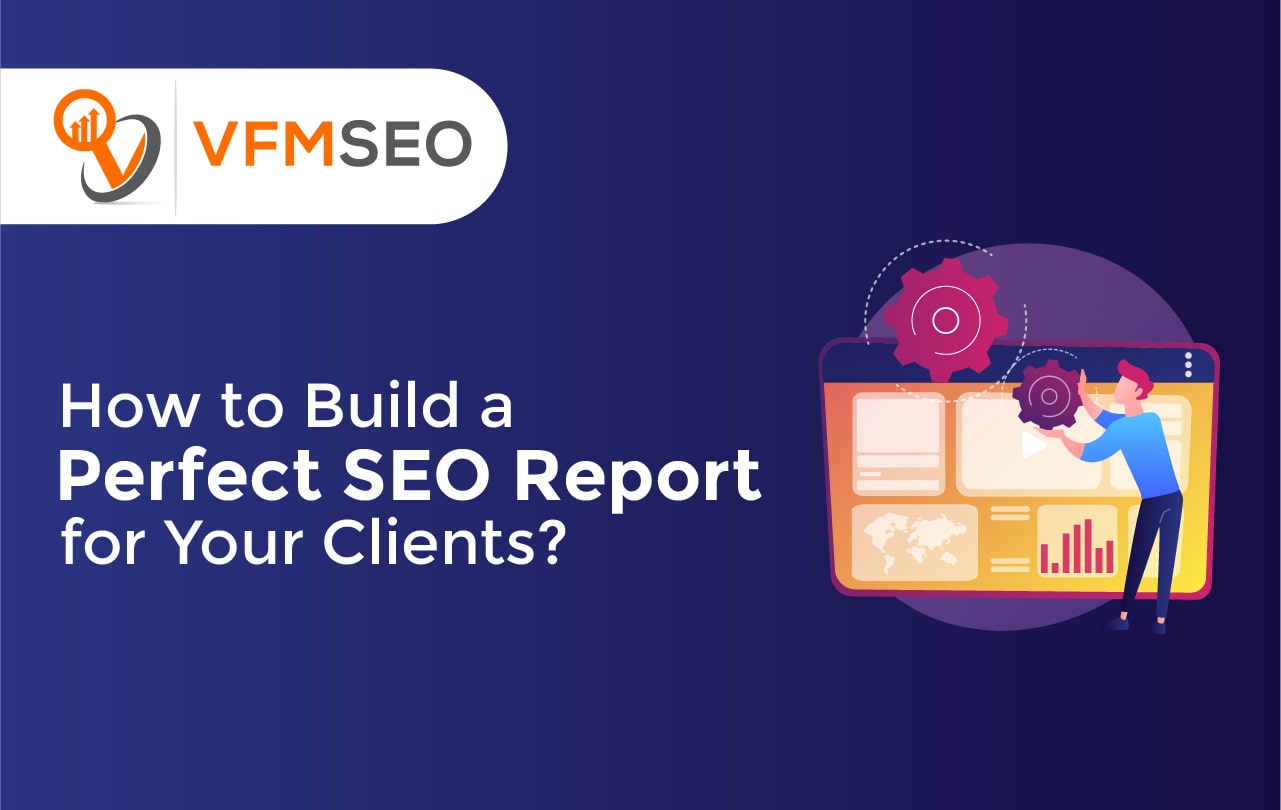
How to Build a Perfect SEO Report for Your Clients?
Whether you are working as an in-house SEO or are agency-side, reports are something that we all have to perform. An SEO report helps to demonstrate the progress that a campaign is making reflects the ROI, and helps justify why we took the approach. That said, SEOs usually need to be doing SEO, not putting together reports.
And for this reason, there is often a vast difference in how different firms and in-house teams report on SEO success, how frequently they do it, and the metrics that they include.

What You Need to Include in Your SEO Report
Report Summary
It can be intimidating to dive straight into a report packed with charts and technical terms, giving your client an overview in plain English first.
Keep it simple and relatively short. If your client has only a few minutes, they should be able to read this introduction and understand what your report contains, even if they don’t know much about SEO themselves.
A good intro lends structure and context to the rest of the report, so be thorough. Provide a breakdown of the following:
- Project Goals and KPIs
- Tasks Completed
- Results Overview
After reading the report summary, the buyer should understand the project focus and results. For example, they should know from the first page of the report that Organic Traffic grew by 15% and generated 50 new leads.
Finish the overview with a few notes on the next steps you plan to take towards the client’s goals.
Traffic Overview by Channel
Where is your client’s traffic coming from? One key section to include in your report is a breakdown of which channels – such as organic search, direct traffic, referrals, and paid search – are producing visitors to your client’s site.
Don’t just provide particular numbers for each channel – compare them to each other, and look for trends in how the traffic is changing over time.
Many SEO reports dump data without any context. By providing the complete picture of website performance, your client can put the SEO and organic performance in perspective.
Clients will also want to see how traffic has changed since you began the campaign. This is your possibility to show just how much traffic you are now generating!
If your services focus on SEO, be sure to highlight changes in organic traffic so your client understands the overall impact of your effort on their other channels.
In the next section, we will dive further into the effects of that organic traffic.
Unexpected peaks may indicate that something is either working very well; for instance, a viral blog post or new PPC campaign started bringing in a lot more traffic, while a drop-off may indicate something abruptly stopped working and requires to be fixed. It is always a good idea to use the annotation feature in Google Analytics to explain these spikes and drop-offs.
Conversions via Organic Traffic
Ultimately, clients need to see what impacts their bottom line. This is probably the essential section of your report. It is when you can show clients the value you’re drawing to the table.
First, it’s essential to set up the Goals you want to track. Goals will cover things like leads and conversions.
For example, every time someone hits your /thankyou page, they probably purchased something, and therefore they completed what you wanted them to be satisfied with. You can learn more regarding setting up Goals. Once you have your Goals set up, you can see how often your web visitors from organic search completed those goals.
In this section, zero in on your buyer organic traffic based on their Goals. Look at how these visitants behave on the site. Do they stick around, or do they buy modafinil australia jump right away? Are conversions from organic traffic boosting, decreasing, or holding steady?
While more organic traffic is usually better than less, the key is the quality of the traffic. A low conversion rate coupled with high organic traffic might mean that your client isn’t currently bringing the kind of customers they need, and you should reconsider the keywords targeted. Or there are issues on the website itself preventing conversions. A high bounce rate can indicate the same difficulty.
Send this report over with a short analysis covering these points to help put things clearly and moving forward.
Landing Page Report
If you are writing content or creating new pages for clients, you want to include a section on landing pages.
A landing page report provides additional insight on which pages generate the most traffic. Filter this report by the “Organic” channel for a report that is specifically focused on SEO.
This is also a special section for any client that you manage a blog for. They can quickly see which blog posts generate traffic, conversions and gauge interest via the bounce rate.
Keyword Rankings
Keyword rankings are an important part of any SEO report. They’re a good indicator of whether your overall strategy is working or whether you might need to try something else.
When you onboard a client, you need to identify a handful of target keywords you begin tracking from the beginning of the campaign. Add these keywords to your SEO client report template to simply show progress in the SERP.
In addition to the keywords your client is ranking for, look at the search terms bringing traffic in. Is there a lot of extension between the two groups?
Ranking number 1 for a campaign isn’t going to mean much to a client if it makes zero traffic.
Suppose those target keywords aren’t generating traffic. In that case, you may require to revise your strategy to focus on keywords with a higher search volume or look at your click-through rate in Google Search Console to see if you need to optimize your titles and Meta descriptions better.
While keyword rankings are a great indicator of performance, you don’t want to send a keyword ranking report alone. Including overall search traffic for the client and organic conversions is a far more robust indicator of a great campaign ROI.
Google Search Console
You know which keywords are ranking now, but how many hits are they generating in Google? Google Search Console provides tons of helpful information about how Google interacts with your client’s site. There’s plenty of data here that you can quickly fold into a report template for clients.
Give your client information on which search terms people are hitting to find them. You can see this under Search Analytics in your Search Console Account. Or it is also accessible in your Agency dashboard. In addition to showing an overview of all keywords generating clicks, show impressions, click-through rate, and average position. It will include any keywords you aren’t currently tracking in your keyword rank tracker.
Google Search Console also gives warnings if a site has any problems, such as issues with indexing or security. If you get any of these alerts for your client’s site, include that information in your report – as well as a summary of how you fixed the problem.
Backlink Overview
Building a healthy backlink profile is one of the most significant challenges SEO professionals face. If you are giving link-building services to clients, then you want to report on it too.
However, you don’t require to dump a giant list of all backlinks the client has. Remember: too much data is only going to distract from the success of your SEO.

